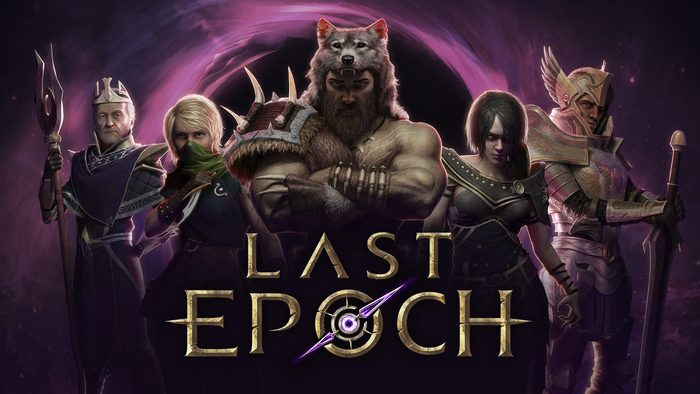We cover a lot of ARPGs here on this site — probably our third-most commonly reviewed genre of game on Goonhammer after Warhammer 40K titles and third-person open world character action games, which makes sense, because this is a site where we love fiddly little stat changes when you switch different weapons out and where we love playing dress up with our character models. We’ve been in a holding pattern on that front for awhile; there’s only so many articles you can write about Path of Exile’s season mechanics, and both Path of Exile 2 and Diablo IV seem quite a ways off (though the latter did just drop a story trailer that for some reason sought to justify the ear-based PvP economy those games have). However, between sometime just after Christmas and now, I’ve put enough time into Eleventh Hour Games’s Last Epoch to feel comfortable giving it coverage in this space, especially following the large content patch that just dropped for it and tightens up the endgame.
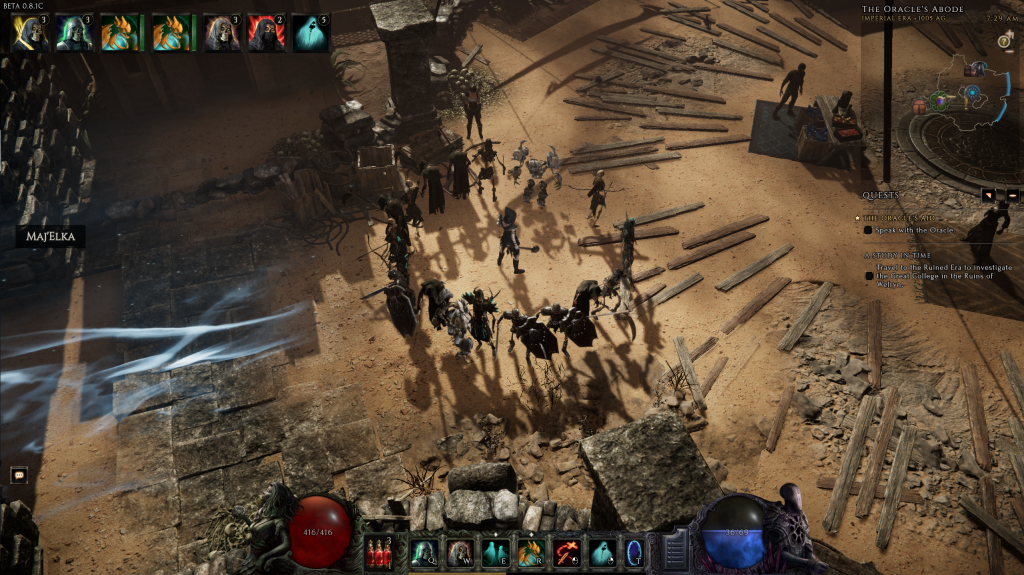
When The Last Epoch was originally marketed to me a year and a half ago on some messageboard or Twitter post that’s long since been lost to the ten years that have passed since, whoever was hawking it praised it as a “Path of Exile killer.” This is, thank god, incorrect. When we’re talking about ARPGs, we’re talking about infinite skinner boxes that have the capacity to claim entire years of peoples’ lives. Path of Exile is literally how some people have spent their twenties. Just that one game! Some of them have monetized it into streaming, but others just have thousands — or tens of thousands — of hours on a treadmill whose main output is community clout, respect, some really cool cosmetics, and the deeply-satisfying feeling of a character properly optimized (before your eternal foes, the game’s developers, decide to nerf it into oblivion in the next patch). For addictive personalities — and one doesn’t have to have a particularly addictive personality to lose oneself in numbers going up for a couple weeks — the world doesn’t need another Path of Exile. It just needs more ARPGs worth sinking, say, 300 hours into.
I’m about a third of the way there since Christmas, having seen all the story content with each of the five playable character classes and scratched the surface of the procedurally-generated endgame content. At launch, Last Epoch had four character classes, rather wisely choosing the more beloved archetypes from genre progenitor Diablo II and going from there: the Mage (self-explanatory), the Acolyte (Necromancer), the Primalist (Druid), and the Sentinel (Paladin). Eventually they’d add the Rogue (Assassin) later on in Early Access. Each of those classes has three mastery classes — though not all of these are in the game yet for every class — which generally specialize the character into a summoner or an alpha striking tank or a trap-layer, so on and so forth. It’s a rather standard design conceit by now, and the story elements of the game, which involve time-travelling through the apocalypse of a doomed peninsula (which might be the whole of its fantasy world) are…skippable. That’s fine. Not even Path of Exile has a story that stands up to much scrutiny; ARPGs get by on aesthetics and vibes, not plot complexity or moving characterization. After all it’s kind of difficult to get that stuff in the game when your only means of interacting with the world is slaughtering everything on a given map. In this respect, Last Epoch is perfectly acceptable even if the time travel stuff is mainly an excuse to serve you slightly different versions of the same maps (hardly a new trick in the ARPG tradition). The vibes though? Very cool. Solid skeletons, lots of creepy-crawlies — its even got dinosaurs with birdlike features! They’re great, and they feature into the Primalist summon tree with the raptor. Check out this death chicken hanging out with the rest of the boys.
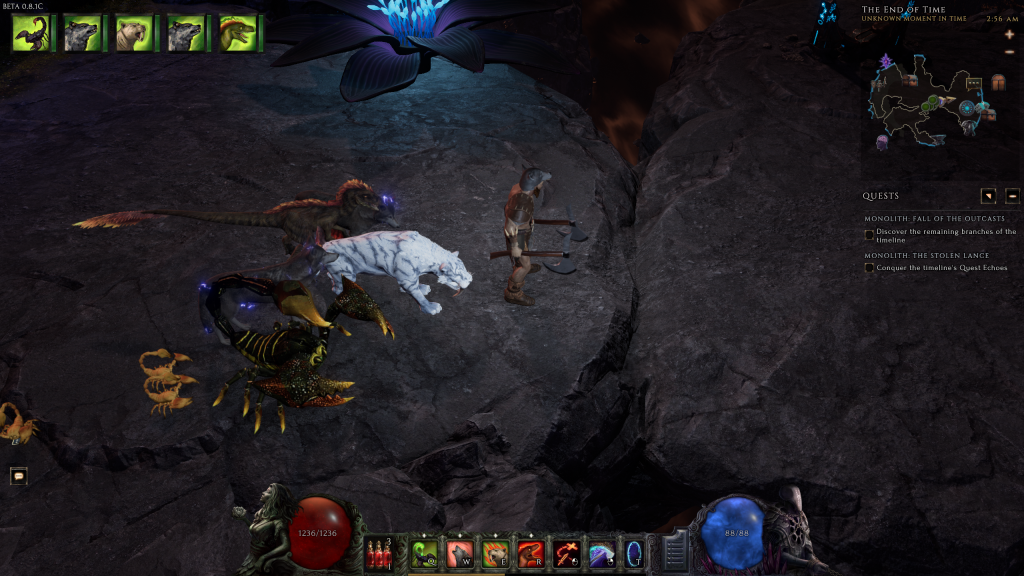
The way in which Last Epoch is special among ARPGs is the tack it takes towards its active skills. Each active skill in the game will, upon the game’s full release, have an entire skill tree that you can level up and put points into in order to refine and change what the skill does. For instance, here’s the tree for Summon Skeleton, the basic Acolyte (again, Necromancer) summoning ability. You earn XP in this skill tree by killing enemies; you don’t have to actually use the skill to kill the enemies to gain XP, but you don’t appear to gain much from XP awarded from quests. There are four branches here: three for three different kinds of Skeletons you can summon (Rogues, Warriors, and Archers), and one for what happens when a Skeleton dies. There are three nodes on the tree that increase your maximum number of Skeletons allowed at once, and both the Archer and Warrior path have a capstone ability that disables the summoning of the other. This is a common, reinforced thing across many of the skill trees for abilities: they’re about specialization. There are almost always tradeoffs to be made over the course of making a skill stronger — and of course, the mere act of investing in any specific path on one of these skill trees is itself a tradeoff, since you have a maximum of 20 levels to earn and spend, and each advancement has an opportunity cost.
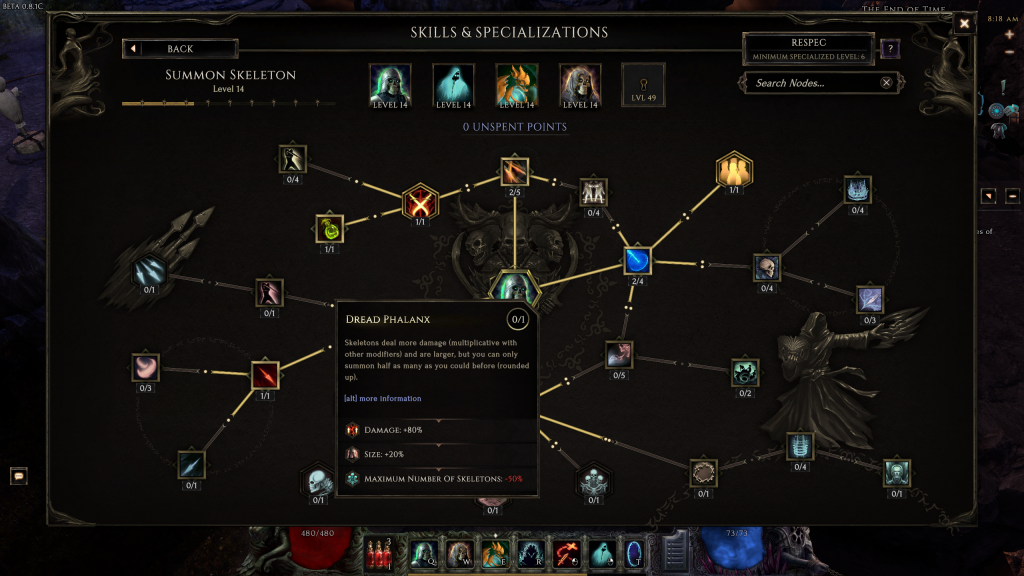
You get access to whatever skills you are entitled to given your character level and specialization progression in the passive trees at all times, but only a certain number of skills can be specialized — you unlock up to five slots as you level up, and you can see that the final slot here is only available once you reach endgame potential. This dovetails nicely with the game deciding that they don’t want to incentivize hotkey set hotswapping; you’ll have a skill on right mouse button, four skills on your Q W E and R, and that’s basically your build. If you want you can set up swapping, but it will be for basic versions of other skills you have access to — these five will be your mains. Meanwhile, you have access to the passive tree to build your character as below, gaining points to slot into the progressions as you gain levels and complete quests (for which passive skill points are a reward). On the right side of the progression chart, there are skills that are either locked or unlocked depending on your progress up the tree; this is one of the primary tactical concerns of using your passive points besides just buffing the strongest parts of your build. Passive points are gained permanently and can be trivially reallocated with a gold-spend-per-point system; skill specialization points are a function of earned XP, and when they’re removed, they disappear for good (until you kill enough enemies to earn them back).
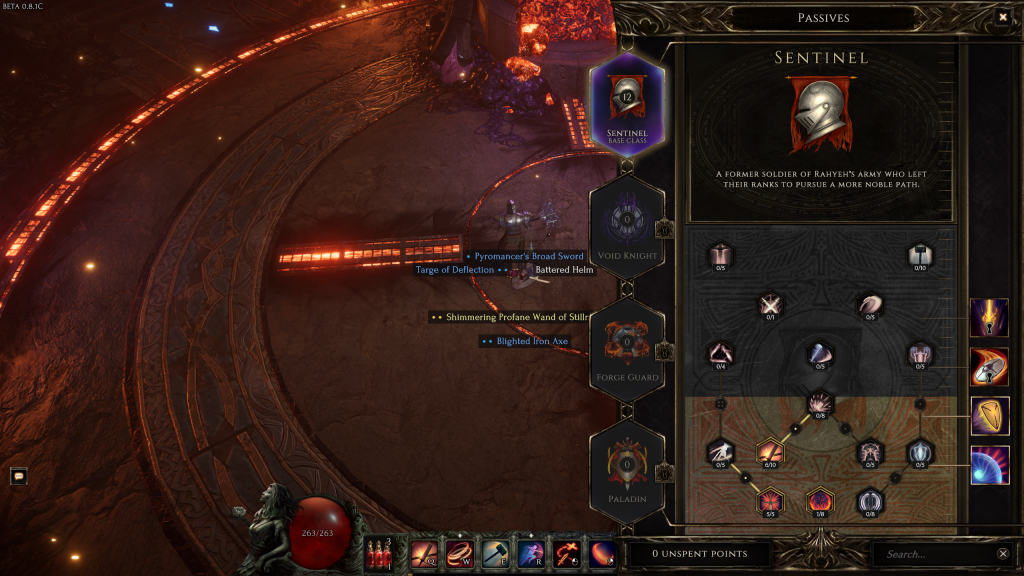
There are other systems that are kind of hit and miss; trending towards hit is the crafting/enhancement system that allows you to take normal items and buff them with specific prefixes and suffixes in the traditional Diablo-style sense, with a constant increasing risk of ruining the item permanently (first not being able to upgrade it again, but eventually progressing to making it unusable). The interplay between this and the unique weapons in the game is interesting, because generally speaking you can always brute force better numbers onto a crafted weapon than you’ll get from a unique, but the game’s uniques will always have the sort of modifiers that you can’t get anywhere else and can change an entire build. Perhaps the best amulet slot item in the entire game for any character who is directly attacking foes, for instance, is this quest reward from very early in the story:
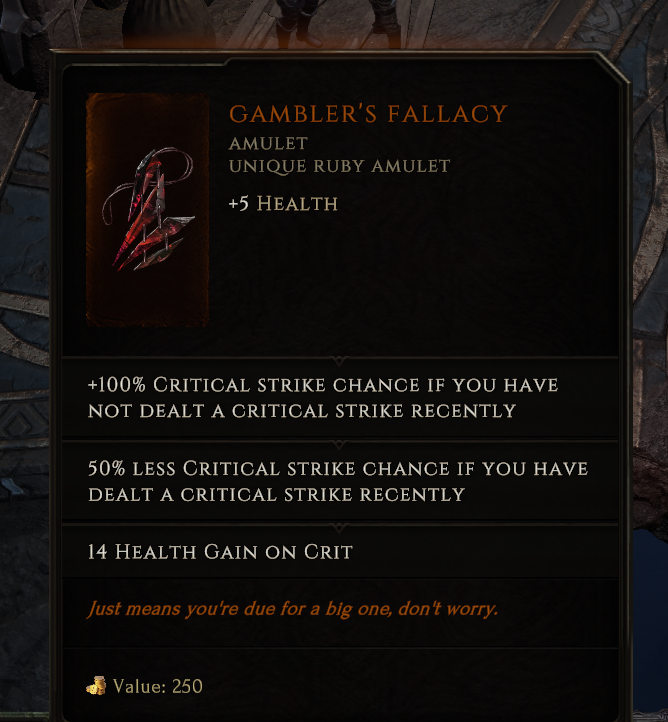
That’s a guaranteed critical hit once every three seconds or so. If you build your resting crit high enough, the debuff doesn’t matter; but if you’re not doing a crit build, you’re probably attacking slowly enough that getting a guaranteed crit with such a high damage weapon every 4-5 attacks is an incredible boon. They’ll probably nerf it eventually but until they do I have six of them for my Sentinel, Sentinel, Primalist, Rogue, Rogue, and Mage. Yes, you can do melee builds with a Mage.
A system that’s kind of a miss, as currently construed, is the idol cube. Over the course of the story you unlock a 4×4 grid in which you can place idol items that drop; they drop in pretty much any imaginable shape, from 1×1 to 2×1 to 1×2 to 3×1 to 1×3 to 2×2 to…you get the picture. The only thing I haven’t seen yet is something more weighty than a 2×2 cube; 4×1 and 1×4 are both on the table. You tetris these idol items into your 4×4 idol cube to gain whatever passive buffs are attached to the item. No rares, no uniques, no crafting associated with them (not yet anyway), just the incentive to build vast reserves of these fiddly little items for future builds you may or may not indulge in. Lots of bookkeeping without any real great item feel, which is a loss coming and going; hopefully before the game launches sometime in 2021, they figure out a way to build that system out better.
After all, all of these games are built on feel when it comes down to it. This is a game that makes almost everything feel good. That wasn’t the case for Wolcen (good God), wasn’t the case for a bunch of builds on Warhammer 40K: Inquisitor, and was even a problem sometimes on Grim Dawn (something it solved with just a firehose of content and really good loot design). If there’s something that’s lacking, it’s probably unique and set weapon buildout; the underlying design is very good, but there’s just not enough different uniques in the game yet, and you run into a lot of repeats as you make your way through. (One thing that is nice: the game clearly biases unique drops towards your class, meaning you have a much better chance of finding those great specific minion-buffing items you need if you’re playing a class that uses those specific minions. You also get shared stashes from the jump so when you inevitably get drops for other builds, you just shove them in.)
The graphics are what they are; that’s not a bad thing per se, but this is a Unity engine game made with Quixel Megascans libraries, and there’s a general standardized feel that’s forming with games that are going this route. Similar assets, similar lighting, similar framing. That said, Wolcen is one of those too, and Last Epoch has much better art design and art priorities than that product does. And it doesn’t look bad at all, though it might chug a bit when the particle effects really get going. Again, though, this graphics card will need a replacement soon.
Final Verdict:
You can get the game for a base price of $35 on Steam, which is more than worth it; there are Founders packs for cosmetics and “spendable currencies” for which you can pay more money, but there’s no clear reason to ever do so unless you either love the pets or love the game so much you want to kick them some more cash. I’m happy with the price I paid for it and probably would have gone to $60 for it, but I have no interest in cosmetics. That way lies Path of Exile madness.
Have any questions or feedback? Drop us a note in the comments below or email us at contact@goonhammer.com.
